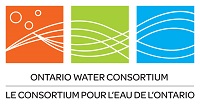Explore watershed-scale hydrogeologic processes
Urbanization has a profound effect on watersheds. Our dense network of monitoring stations enables the study of those effects and testing of new technology. Groundwater remediation and bedrock aquifer testing facilities are also available.
Advanced analytical equipment is also available through this node that provides the ability for analysis, research and development of techniques for the identification of novel contaminants.




SOWC Supported Facilities
Watershed Monitoring
Facilities and monitoring are located in the subwatersheds of Hopewell Creek (Grand River Watershed, relatively pristine), Alder Creek (Grand River Watershed, urbanizing), and Mimico Creek (Greater Toronto Area, very urban), as well as along the Grand River itself. New infrastructure expands existing monitoring networks with increased tracking of groundwater and surface water interaction phenomena, enhanced biogeochemical analysis capabilities, and smart monitoring systems that respond to environmental triggers. Monitoring stations can be used to evaluate sensitive municipal water withdrawals, agricultural land management, expanding urban development, and overall dynamics in these watersheds.
The Grand River Conservation Authority can also make available to SOWC users nine water quality monitoring stations and 44 water level gauge stations for the placement of water quality and quantity monitoring devices. At the water quality monitoring stations, water is pumped from an intake pipe to an internal tank for monitoring and then discharged. The stations are heated in the winter, contain 120 AC power, have controlled access and are currently in use for monitoring temperature, pH, conductivity, turbidity and dissolved oxygen. Stations are located throughout the Grand River watershed.
Borden Facility
The Borden Facility provides a platform for development and field testing of concepts and technologies in contaminant hydrogeology and groundwater remediation. This Facility consists of existing infrastructure capable of supporting field experiments such as the controlled release of chemicals into the subsurface to demonstrate transport processes and remediation. Infrastructure includes sheet-piling isolated cells, extensive multilevel groundwater monitoring networks, wells for testing sampling devices, and existing sources of contamination emplaced into the aquifer.
Guelph Fractured Bedrock Facility
The Bedrock Aquifer Field Facility is located on the University of Guelph campus, and is situated on the City of Guelph’s bedrock water supply aquifer. This Facility supports the development and validation of various types of novel downhole monitoring and sampling equipment related to fractured rock aquifer characterization. SOWC supported boreholes build on an existing network of research boreholes at the University of Guelph and in the surrounding area to create an extensive bedrock network of boreholes for various scales of experiments.
Other Partner Institution Facilities
Kennedy Research Station
Queen’s University Biological Station
Coastal Engineering Laboratory
Eramosa Engineering Uses SOWC Watershed Data to Enhance Water Treatment Data
Monitoring the watershed in real-time
Ontario takes big data analytics to the watershed

